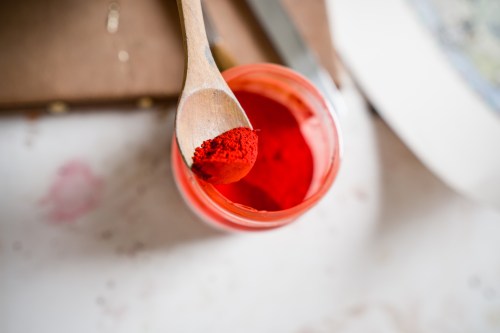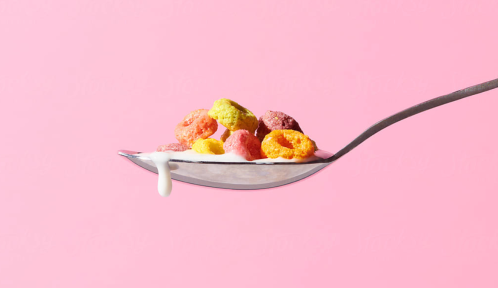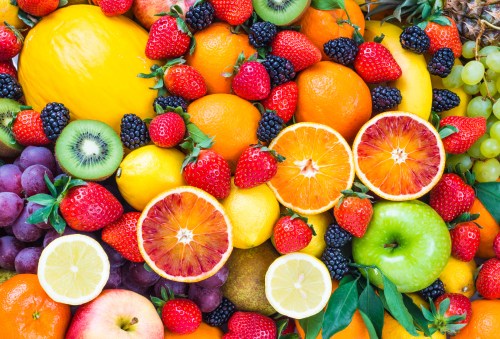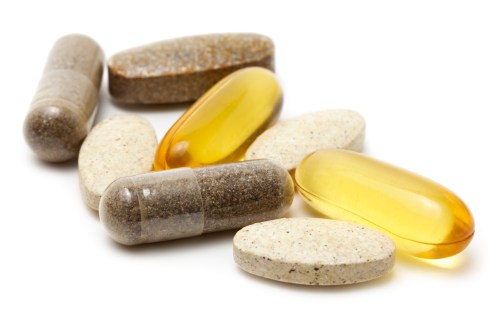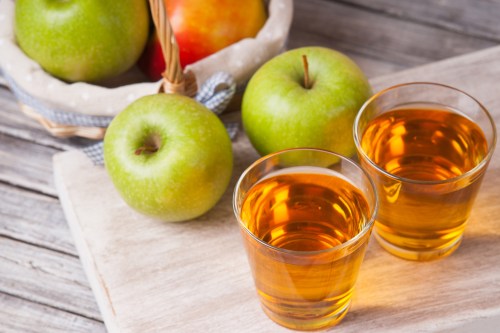Artificial food dyes have been a hot topic in health for years, with the Food and Drug Administration (FDA) revoking approval for red No.3 in January. Now, all petroleum-based food dyes are on the chopping block. The Department of Health and Human Services (HHS) and FDA announced a series of steps on Wednesday to pull eight synthetic food colorings from the U.S. food supply by the end of next year. (Conversely, the removal of red No. 3 wasn’t slated to go into effect until 2027.)
But, the agencies also revealed in the same announcement that there are plans to authorize four new natural color additives “in the coming weeks” while accelerating the review and approval of others. Those natural food dyes were name-checked in the announcement: Calcium phosphate, Galdieria extract blue, gardenia blue, and butterfly pea flower extract.
Most people aren’t familiar with those natural dyes, and the food dye space is admittedly a little confusing. So, what are these natural dyes and are they a better choice than the existing artificial dyes? Toxicologists and food safety experts break it down.
Which food dyes are currently approved for use in the U.S.?
At the time of publication, there are eight artificial dyes approved by the FDA for use in food and medications in the U.S. Those include:
- Red No. 40
- Blue No. 1
- Blue No. 2
- Citrus Red No. 2
- Green No. 3
- Orange B
- Yellow No. 5
- Yellow No. 6
All of these are set to be removed from the food supply by the end of next year, according to the joint HHS and FDA announcement. Plans are already in motion to remove Red No.3 from the food supply by 2027, although the agencies are now encouraging companies to stop using the dye even sooner.
But there are natural dyes already being used in the U.S., and many of these don’t require special authorization from the FDA. “For the most part, if you’re using an extract of a naturally-occurring food product, like beet juice, it’s not necessary to gain special approval,” says Gabriel Keith Harris, PhD, professor of food science at North Carolina State University. Some common natural food dyes that are already being used include the beet juice just mentioned, along with paprika, saffron, curcumin, matcha, and caramel.
What are these new natural food dyes?
These new natural dyes aren’t derived from foods, which is why they need special authorization from the FDA to be used in food products. Here’s a breakdown of what they are and how they’re used.
Calcium phosphate
This ingredient is already in the food supply and is considered generally recognized as safe or GRAS. “It’s used for multiple purposes in food production,” says Francisco Diez-Gonzalez, PhD, professor and director of the Center for Food Safety at the University of Georgia. “In addition to being a white colorant, it is used as leavening agent in baked goods, as an anti-caking agent, a clouding agent, and a firming agent in other foods.”
Calcium phosphate is also used to “anchor” dyes in foods, explains Jamie Alan, PhD, an associate professor of pharmacology and toxicology at Michigan State University. “This is currently found in some cereals, toothpastes, and pastas.”
Galdieria extract blue
Galdieria are a type of algae that create brilliant blue pigments called phycocyanins, says Kelly Johnson-Arbor, MD, a toxicologist at MedStar Health. “These pigments are used as natural blue dyes in cosmetic products and can also be used as food coloring agents,” she says.
Rat studies have not linked Galdieria extracts with significant toxicity, making them potentially safe for use as food dyes, Johnson-Arbor says. “However, the extraction and purification of algal extracts, including Galdieria, remains expensive and time-consuming, which may limit the widespread use of these extracts as food coloring agents,” she adds.
Phycocyanins are also very sensitive to light, temperature, and other environmental factors, and have a limited shelf-life because of this, per Johnson-Arbor.
Gardenia blue
Gardenia blue is a dark blue-purple dye derived from the gardenia fruit. “Gardenia, an evergreen plant, grows in tropical regions, and is widely used in Asia as a food colorant for wine, baked goods, and seafood,” Johnson-Arbor says.
“It is currently not allowed in the U.S. and Europe,” Diez-Gonzalez says. Research on rodents so far hasn’t linked this food dye with toxicity or cancer-causing effects.
Butterfly pea flower extract
This is a dark blue extract of dried butterfly pea flowers, Diez-Gonzalez explains. “It was authorized by the FDA in 2021 to be used as colorant in multiple foods,” he says. Butterfly pea flower extract creates a vibrant blue or purple hue that changes depending on the pH level, says Vanessa Rissetto, MS, RD, CDN, co-founder of Culina Health.
Alan calls butterfly pea flower extract “a fun product,” noting that it’s sometimes used in mixed drinks. “It can look blue, but change to a purple tone when acid—like lemon juice—is added,” she says. “The flower and parts of the flower have been used as medicinal herbs for some time now.”
Why might natural food dyes be a good choice over petroleum-based dyes?
It’s important to point out that both natural and synthetic dyes are considered “safe” by FDA standards. “The safety requirements are the same for food colorings made synthetically as those from natural sources,” says Neal Fortin, director of the Institute for Food Laws & Regulations at Michigan State University.
But research has linked a range of synthetic food dyes to potential health issues—though mostly only in mice and rat studies. “Petroleum-based dyes have been linked with neurobehavioral effects,” Alan says. “The current hypothesis is that natural food dyes will not cause these effects.” However, that’s not entirely clear at this point.
“Natural dyes, which are usually extracted from vegetable and fruit peels using chemical solvents, seem to carry no risk for now and could be a great alternative to things like red No. 3, for example,” Rissetto says. “However, it’s important to note that these alternatives have not been tested as heavily as artificial dyes,” she adds. They also do not look or taste the same as artificial dyes, so big recipe changes may need to be made in foods to get similar results to the products we know and love.
Natural food dyes aren’t the perfect solution, though.
Using food dyes derived from natural sources seems like a good choice, but experts say there are a few potential drawbacks.
“Natural food dyes may be less stable than synthetic colorants, meaning that they may lose their pigmentation during food storage,” says Johnson-Arbor. “While synthetic food dyes are created to provide uniform and bright colors that retain their appearance over time, the colors associated with natural food dyes are often less pigmented and more variable in appearance, and these characteristics may make foods less appealing visually.”
It’s important to point out that both natural and synthetic dyes are considered “safe” by FDA standards.
Natural food dyes are also usually more expensive to make than synthetic options—and that may ultimately increase food costs to people who buy them, Johnson-Arbor says.
Harris has concerns about what natural food dyes may carry with them. “Is there a heavy metal or some potential toxin produced by microalgae that can be carried into the dye itself?” he says. “It will be important to carefully study these dyes for purity.”
There is a risk of allergic reaction with natural food dye, although some artificial dyes also carry that risk, Diez-Gonzalez says.
Why do we even need food dyes anyway?
Food dyes don’t offer anything from a nutritional perspective, but they play a role in our food system. “Humans have certain food preferences based on taste, flavor, texture, smell, appearance, nutritional value, health function, and color,” Diez-Gonzalez says. “We have been using colorants to make foods more appealing and attractive.”
While most colorants have little to no health or functional role, “their aesthetic function cannot be ignored,” he says.
Rissetto points out that you don’t need to eat foods that contain dyes, whether synthetic or natural. “This is an opportunity for Americans to steer away from processed foods and instead focus on incorporating whole foods into their diet,” she says.
Sign Up for Our Daily Newsletter
Get all the latest in wellness, trends, food, fitness, beauty, and more delivered right to your inbox.
Got it, you've been added to our email list.
